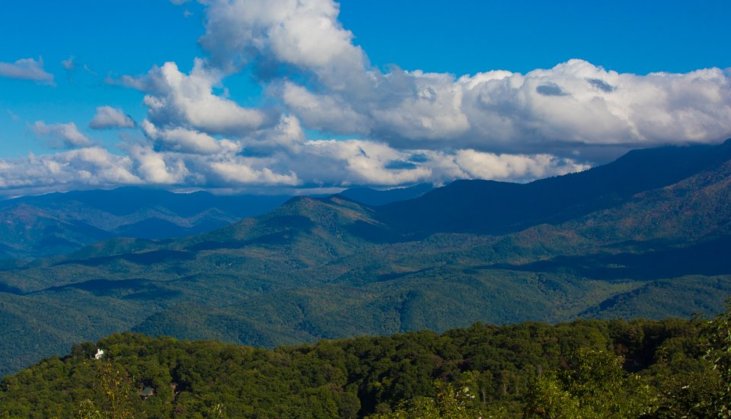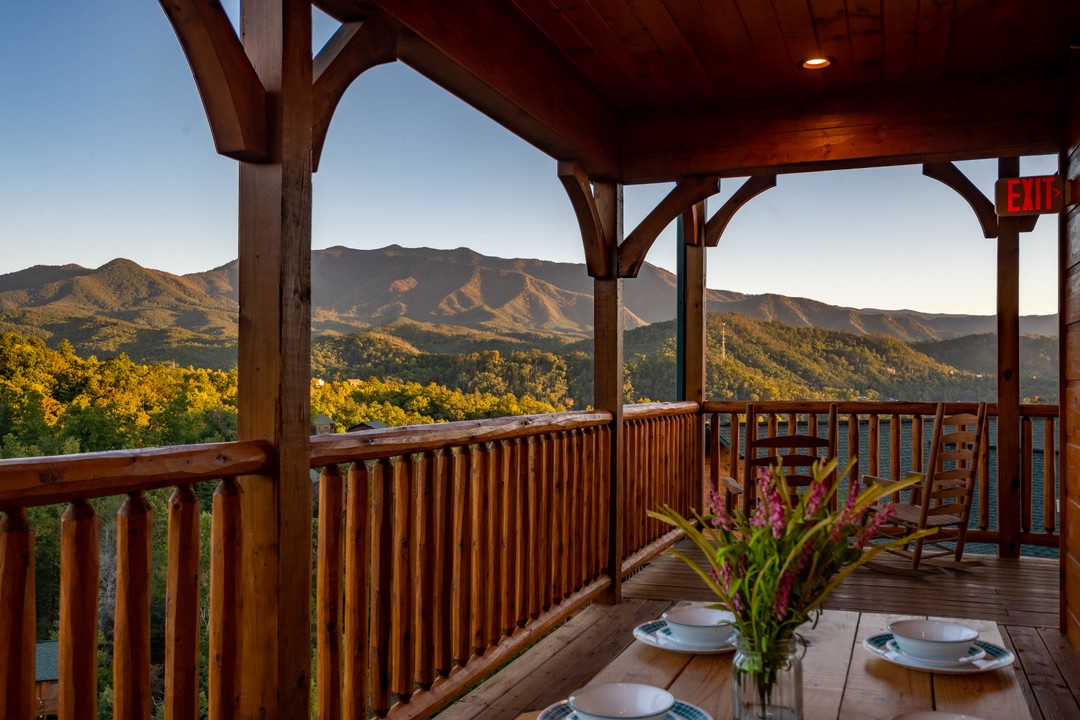Nestled into the northern foothills of the Great Smoky Mountains along the West Prong of the Little Pigeon, Gatlinburg is one of the great destination towns in America: gateway to the country’s most popular national park. Besides the natural charms of the Smokies—towering forests, whitewater flumes, and falls, endless views from the mountaintop balds—Gatlinburg offers its own slew of in-town attractions.
But when exactly should you plan your visit here to the doorstep of the Great Smokies? All things considered, there’s not a bad time to come to Gatlinburg, though the biggest throngs of vacationers and sightseers pass through in summer (no surprise) and during the fall leaf-peeping season.
In this article, we’ll run through the basics of Gatlinburg’s weather, so you know what to expect whenever you happen to draw up anchor in this foothill hub.
Average Annual Weather to Expect in Gatlinburg, TN
Gatlinburg’s location tucked against the mighty rise of the Great Smoky Mountains makes for a lot of climatic variation in its neck of the woods. Thousands of feet of topographic relief create significant temperature and precipitation variations between lowland sites—such as the town itself—and the nearby Southern Appalachian heights.
Summer’s the longest season in Gatlinburg
Humid and warm-to-hot weather predominates from late May into early September. Expect afternoon highs to climb to the 90s in July and August. High pressure over the South Atlantic this time of year sends warm, moist air masses over the region, and major frontal weather is rare. Upslope, heat-driven airflow into the Great Smokies often generates summer rain and thunderstorms. Indeed, July’s the wettest month in Gatlinburg and the Smoky Mountain region in general.
Fall, by contrast, is typically the driest time of year in Gatlinburg
High pressure predominates and thunderstorms diminish. (That said, the area receives fairly even precipitation overall throughout the year.) The weather’s often fabulous, with clearer days compared with summer and temperatures maxing out in the 70s often lasting through October.
November ushers in the winter stretch
The lows in Gatlinburg begin dropping below freezing, and occasional invasions of northern air masses bring about brief cold snaps. Still, temps are on the mild side of things overall compared to the nearby mountains, with daily highs reaching the low 50s on average through the winter months.
Most of Gatlinburg’s winter precipitation is rain
However, the town sees occasional snowfall totaling about nine inches on average per year. Rains and periodic snows in winter often result from low-pressure systems moving northeastward along the western front of the Appalachians, drawing on Gulf of Mexico moisture. Clear days are common in winter, too, making for great views.
Spring’s another shortish transitional season
March is just about the most unruly and unpredictable month in Gatlinburg, with periodic clashes of cold northerly air and moist Gulf air masses sometimes resulting in snow early in the month. (It’s not unusual for the Southern Appalachians, in general, to receive their heaviest single snow dumpings in early March.) But things quickly warm up by the latter half of March, and by April Gatlinburg rarely sees freezing overnight lows.
Gatlinburg gets about 55 or so inches of annual precipitation, but just a few miles away, up on the higher slopes and tops to the south, the Great Smokies mark one of the wettest places in the East: The peaks and ridges see 80 to 90 or more inches of annual precipitation each year.
Gatlinburg Average Weather by Month
The following month-by-month breakdown of average temperatures (all in degrees Fahrenheit) and precipitation is based on information from the Great Smoky Mountains National Park website, which uses Gatlinburg’s weather to illustrate that park’s typical lowland conditions throughout the year.
January
- Average High: 51°
- Average Low: 28°
- Average Precipitation: 4.8 inches
- Average Snowfall: 2.3 inches
- Precipitation Days: 9
February
- Average High: 54°
- Average Low: 29°
- Average Precipitation: 4.8 inches
- Average Snowfall: 2.9 inches
- Precipitation Days: 9
March
- Average High: 61°
- Average Low: 34°
- Average Precipitation: 5.3 inches
- Average Snowfall: Trace
- Precipitation Days: 8
April
- Average High: 71°
- Average Low: 42°
- Average Precipitation: 4.5 inches
- Average Snowfall: 0
- Precipitation Days: 8
May
- Average High: 79°
- Average Low: 50°
- Average Precipitation: 4.5 inches
- Average Snowfall: 0
- Precipitation Days: 9
June
- Average High: 86°
- Average Low: 58°
- Average Precipitation: 5.2 inches
- Average Snowfall: 0
- Precipitation Days: 9
July
- Average High: 88°
- Average Low: 59°
- Average Precipitation: 5.7 inches
- Average Snowfall: 0
- Precipitation Days: 10
August
- Average High: 87°
- Average Low: 60°
- Average Precipitation: 5.3 inches
- Average Snowfall: 0
- Precipitation Days: 10
September
- Average High: 83°
- Average Low: 55°
- Average Precipitation: 3.0 inches
- Average Snowfall: 0
- Precipitation Days: 5
October
- Average High: 73°
- Average Low: 43°
- Average Precipitation: 3.1 inches
- Average Snowfall: Trace
- Precipitation Days: 6
November
- Average High: 61°
- Average Low: 33°
- Average Precipitation: 3.4 inches
- Average Snowfall: 0.7 inches
- Precipitation Days: 7
December
- Average High: 52°
- Average Low: 28°
- Average Precipitation: 4.5 inches
- Average Snowfall: 1.0 inch
- Precipitation Days: 8
When is the Best Time to Visit Gatlinburg?

So, there’s a snapshot of what the skies are doing over Gatlinburg, on average, across the calendar. But when’s the optimal time to visit?
Well, the truth is Gatlinburg’s overall mild/moderate climate means the weather isn’t really a truly discouraging factor at any point. Things are definitely quieter in the winter, but the frosted Smoky Mountain vistas (and ice-shaggy waterfalls) are amazing, and many of the national park’s lower- to mid-elevation trails are often snow-free. If you don’t deal with heat well, high summer in Gatlinburg can get pretty sultry. But, then again, you’ve got the relative cool of the mountains beckoning just minutes away!
For the combo of generally beautiful weather and incredible scenery, it’s hard to beat early to mid-fall. The foothill and mountain forests are blazing with autumn color, the skies are usually crystal-clear, and the temperatures are marvelously comfortable.
It’s easy to fall in love with the Great Smokies, and if you end up getting hooked on this amazing corner of the country you may well want to experience Gatlinburg as a jumping-off point across the seasons. From the wildflower carpets and sweet aromas of spring to the snow-dusted skylines of winter, getting a taste for the Smoky Mountain foothills in all their seasonal cycles is a way to know them all the more deeply.






